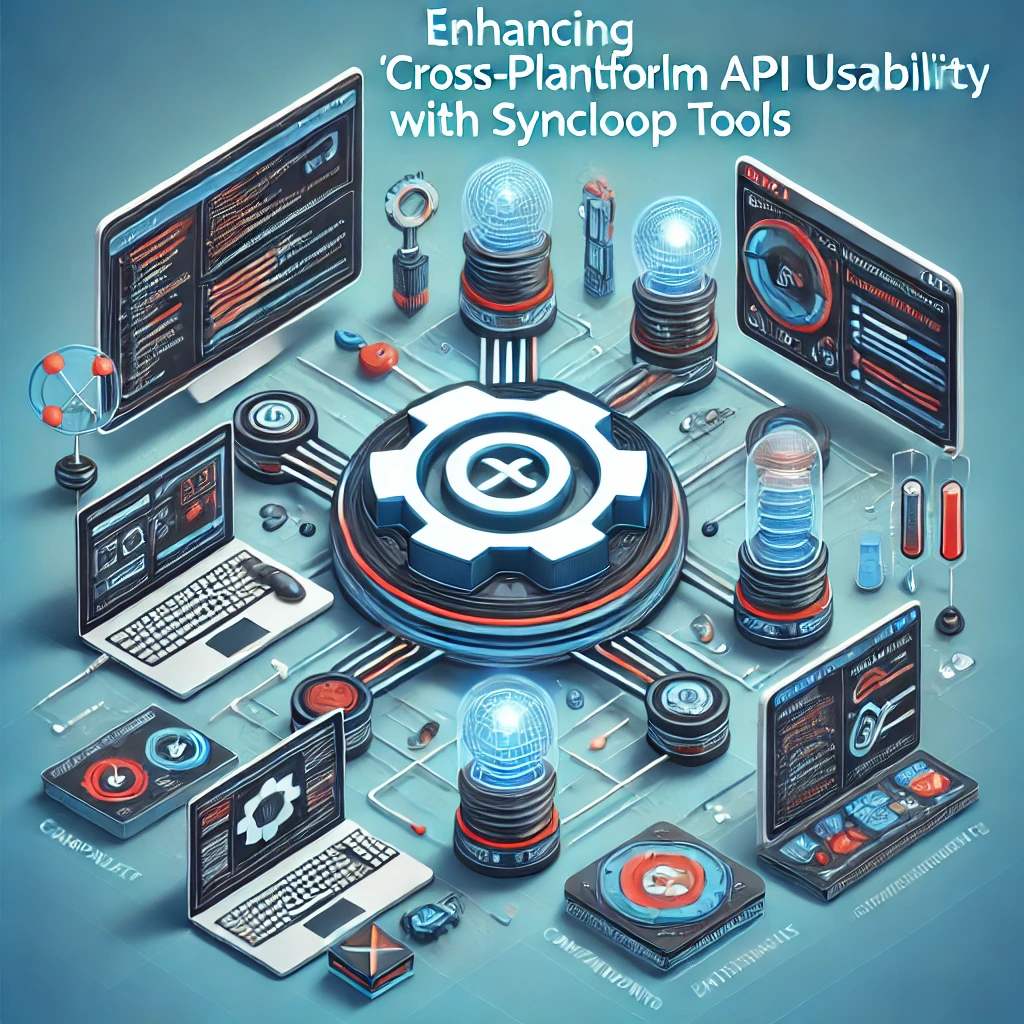Enhancing Cross-Platform API Usability with Syncloop Tools

Importance of Cross-Platform API Usability
Cross-platform API usability is vital for:
- Consistent User Experiences: Ensure APIs function uniformly across web, mobile, and IoT platforms.
- Wider Reach: Cater to a diverse audience using different devices and operating systems.
- Improved Efficiency: Simplify integrations and reduce development time for multi-platform compatibility.
- Future-Proof Design: Adapt to evolving platform requirements with minimal changes.
Syncloop’s advanced tools empower developers to build APIs that meet these demands effectively.
Key Features of Syncloop for Cross-Platform APIs
1. Dynamic Data Transformation
Standardize and adapt data formats to meet the specific requirements of different platforms.
2. Workflow Automation
Automate complex processes, such as data synchronization and format conversions, for efficient cross-platform operation.
3. Real-Time Monitoring
Track API performance, usage, and error rates across platforms in real time.
4. Scalable Infrastructure
Handle varying traffic and usage patterns from multiple platforms seamlessly.
5. Secure Communication
Protect API interactions with encryption, token-based authentication, and role-based access controls.
6. Event-Driven Architecture
Enable APIs to respond dynamically to platform-specific events or triggers.
Steps to Enhance Cross-Platform API Usability with Syncloop
Step 1: Analyze Platform Requirements
- Identify the platforms your API will serve, such as:
- Web applications.
- Mobile apps (iOS, Android).
- IoT devices.
- Understand the data formats, protocols, and performance expectations for each platform.
Step 2: Implement Data Transformation
- Use Syncloop’s Transformers to:
- Convert data formats (e.g., JSON, XML, CSV) based on platform needs.
- Standardize timestamps, currency formats, or measurement units.
- Test transformations with sample data from each platform to ensure compatibility.
Step 3: Automate Platform-Specific Workflows
- Create workflows tailored to each platform, such as:
- Optimizing images for mobile apps.
- Enriching data for IoT devices.
- Incorporate conditional logic to handle unique scenarios dynamically.
Step 4: Monitor API Performance
- Use Syncloop’s real-time monitoring dashboard to track:
- Latency and response times for each platform.
- Platform-specific error rates.
- Analyze performance data to optimize workflows and address issues proactively.
Step 5: Ensure Scalability
- Configure Syncloop to scale resources dynamically based on platform usage patterns.
- Use load balancing to distribute traffic evenly across APIs serving different platforms.
Step 6: Secure API Interactions
- Implement platform-specific authentication mechanisms, such as OAuth for mobile apps or token-based access for IoT devices.
- Encrypt data transmissions to protect sensitive information.
Real-World Applications
1. E-Commerce Platforms
- Use Case: Provide seamless shopping experiences across desktop, mobile, and IoT devices.
- Features Used: Data transformation, real-time monitoring, scalable infrastructure.
2. Healthcare Systems
- Use Case: Synchronize patient data between mobile health apps, web dashboards, and connected medical devices.
- Features Used: Workflow automation, secure communication, platform-specific workflows.
3. Smart Home Ecosystems
- Use Case: Integrate APIs for mobile apps and IoT devices like smart thermostats and cameras.
- Features Used: Event-driven architecture, data transformation, monitoring tools.
4. Social Networking Apps
- Use Case: Enable consistent features like messaging and notifications across web and mobile platforms.
- Features Used: Workflow automation, scalable infrastructure, secure authentication.
Best Practices for Cross-Platform APIs
- Plan for Compatibility: Use standardized protocols and flexible data formats to ensure broad compatibility.
- Monitor Continuously: Track performance metrics across platforms to identify and resolve issues early.
- Leverage Automation: Simplify processes with automated workflows tailored to each platform.
- Secure APIs: Protect data and interactions with robust encryption and authentication.
- Test Extensively: Validate APIs on all target platforms to ensure consistent functionality and performance.
Why Choose Syncloop for Cross-Platform APIs?
Syncloop provides a powerful platform for building and managing APIs that work seamlessly across diverse platforms. Its tools for automation, monitoring, and data transformation make it easy to deliver reliable and scalable cross-platform experiences.
Conclusion
Enhancing cross-platform API usability is essential for delivering consistent and efficient user experiences. Syncloop simplifies the complexities of cross-platform API development, enabling developers to create robust, secure, and scalable solutions. By leveraging Syncloop’s features, organizations can meet the diverse needs of their users and stay ahead in a competitive landscape.
Back to Blogs